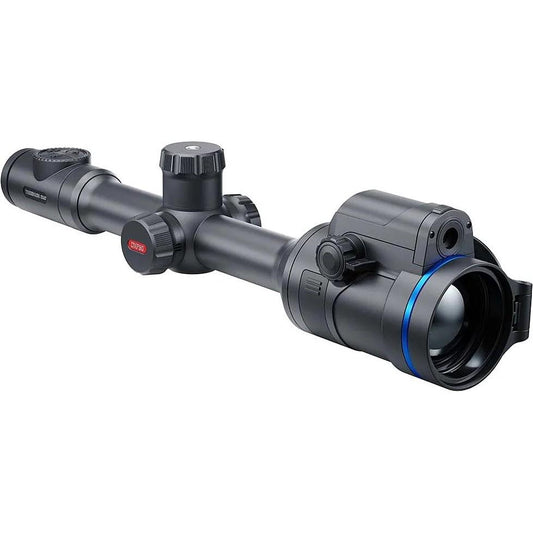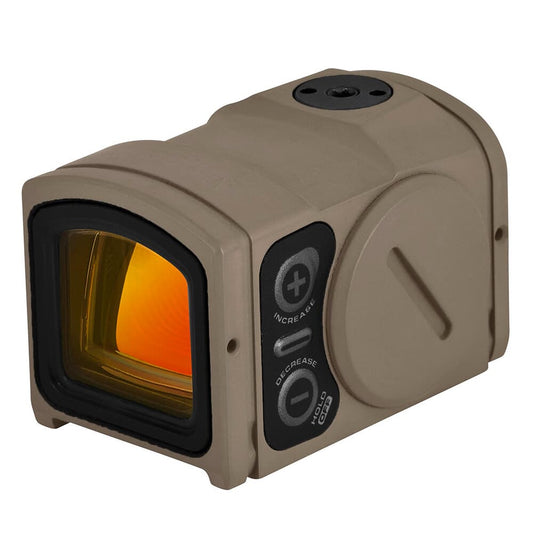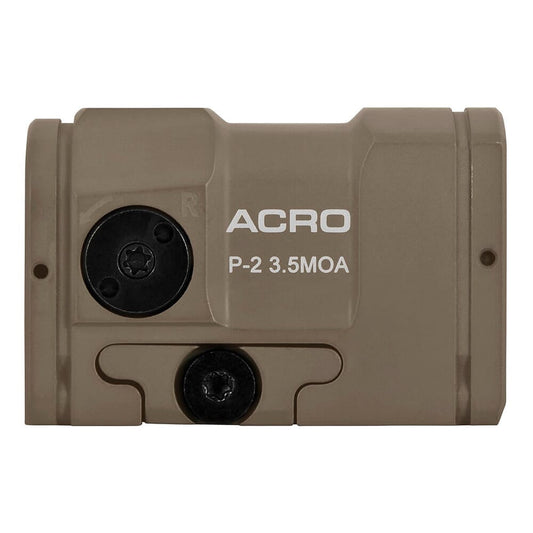

Pulsar Thermion Duo DXP50 Multispectral Thermal Rifle Scope provides advanced long-range optics for both thermal and daytime applications. With a detection range of 1800 yards, this scope excels in tracking game through varying environments. The 640x480 thermal sensor paired with 4K HD color mode allows for detailed assessments of your target's quality in real-time. The scope’s one-shot freeze zeroing feature simplifies sighting adjustments, ensuring accuracy when it's most critical. Built with a durable aluminum alloy, it withstands rugged conditions, making it a reliable companion for outdoor enthusiasts.
Integrated Wi-Fi functionality enables sharing of photos and videos through the Stream Vision 2 app, adding a modern touch to your hunting experience. The robust design also boasts an IPX7 waterproof rating, ensuring performance in wet weather. Weighing only 2.5 lbs and featuring a compact design, the Thermion Duo DXP50 is easy to carry without sacrificing functionality, making it an ideal choice for serious shooters.
Features:
- HIGH DETECTION RANGE for spotting targets up to 1800 yards away, enhancing long-range hunting capabilities.
- MULTISPECTRAL IMAGING combines thermal and full-color optics for versatility across different lighting conditions.
- PICTURE-IN-PICTURE MODE enhances target visibility, making it easier to locate game in dense foliage.
- ONE-SHOT FREEZE ZEROING simplifies the sight-in process, ensuring immediate accuracy for hunters.
- PHOTO & VIDEO RECORDING captures moments with audio, perfect for sharing successes with friends.
- LONG BATTERY LIFE of 6 hours provides extended use during lengthy hunting expeditions.
- IPX7 WATERPROOF RATING guarantees reliable performance in wet or challenging environments.
- COMPACT DESIGN ensures easy portability, allowing for convenient carrying without extra bulk.
Technical Specifications Table
| Feature | Specification |
|---|---|
| Magnification | 3.5-14x |
| Lens Diameter | 50 mm |
| Weight | 2.5 lbs |
| Dimensions | 15.2 x 3.7 x 3.2 inches |
| Material | Aluminum Alloy |
| Battery Life | 6 hours |
| Waterproof Rating | IPX7 |
What’s in the Box?
- Thermion Duo DXP50 Scope
- Lens Covers
- Padded Carrying Case
- USB C Charging Cable
- User Manual
Customer Reviews
"Used it on a foggy day, and it worked like a charm! The clarity is unmatched." - John D.
"The thermal imaging feature is a game changer. I can finally spot deer in low light." - Sarah W.
"Solid build quality and easy to use. Worth every penny!" - Mark T.
FAQ
How does the thermal imaging work? The Pulsar Thermion Duo DXP50 employs advanced thermal sensors to detect heat signatures, enabling visibility in complete darkness or through obstacles like fog and dense vegetation.
Is the scope easy to zero? Yes, the one-shot freeze zeroing feature allows for straightforward adjustments, ensuring you’re ready to take your shot quickly and accurately.
What makes this different from other scopes? The multispectral capabilities—thermal and color—provide unmatched versatility, distinguishing it from traditional optics and enhancing performance in various hunting conditions.
Similar Models
Looking for more options? Discover our complete collection of Pulsar optics, including the Pulsar Thermion XQ50 for enhanced thermal imaging and the Pulsar Digex N455 for night vision exploration. Explore now for all your outdoor adventures!
You May Also Like
Here’s some of our most similar products people are buying. Click to discover trending style.








